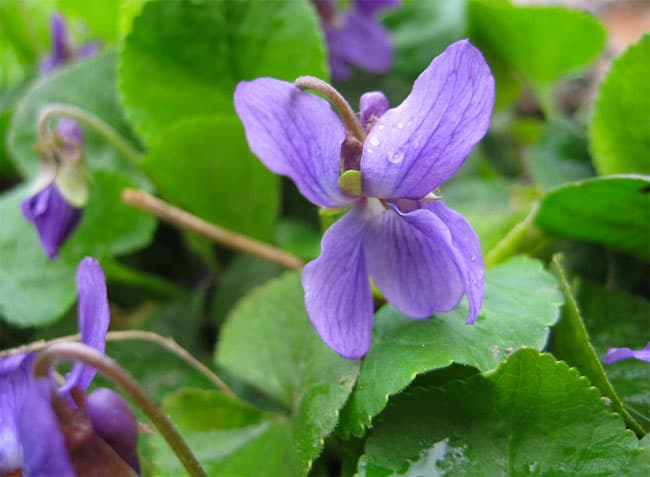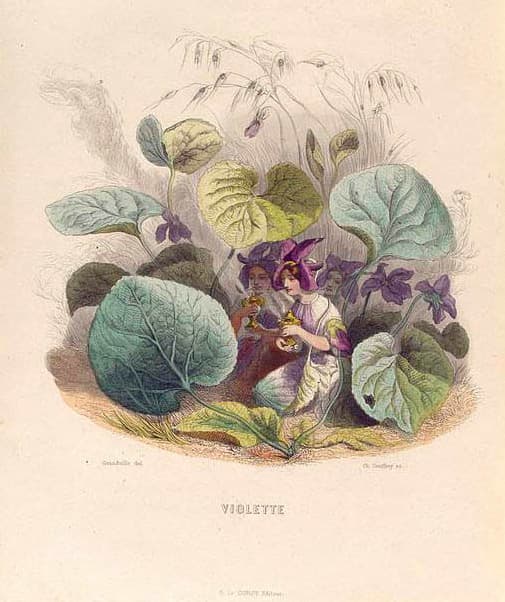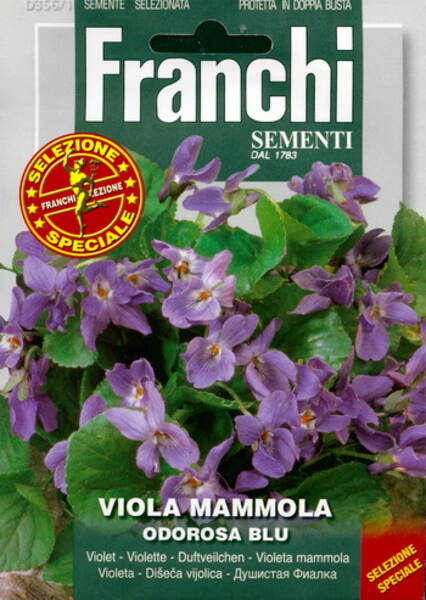An evergreen perennial growing to 0,1 m by 0,25 m.
It is hardy to zone 5 and is not frost tender. It is in leaf all year, in flower from February to April, and the seeds ripen from April to June. The scented flowers are hermaphrodite (have both male and female organs) and are pollinated by Bees and Cleistogomy (self-pollinating without flowers ever opening). The plant is self-fertile. We rate it 5 out of 5 for usefulness. The plant prefers light (sandy), medium (loamy) and heavy (clay) soils and requires well-drained soil. The plant prefers acid, neutral and basic (alkaline) soils. It can grow in semi-shade (light woodland) or no shade. It requires moist soil. Habitats and Possible Locations Hedgerow, Woodland, Cultivated Beds, Sunny Edge, Dappled Shade, Shady Edge, In Walls, In North Wall, In South Wall, In East Wall, In West Wall, Ground Cover.
Succeeds in most soils but prefers a cool moist well-drained humus-rich soil in partial or dappled shade and protection from scorching winds. When grown in the open it prefers a moderately heavy rich soil. Plants have done very well in a hot dry sunny position on our Cornish trial grounds. Tolerates sandstone and limestone soils. Plants are hardy to about -20°C.

Sweet violets are very ornamental plants, there are many named varieties. They produce their delicately scented flowers in late winter and early spring - these are designed for fertilisation by bees and since there are few bees around at this time of year these flowers seldom set seed. However, the plants also produce a second type of flower later in the year. These never open, but seed is produced within them by self-fertilization. The plants will often self-sow freely when well-sited. They can also spread fairly rapidly at the roots when they are growing well. Responds well to an annual replanting in rich loose leafy soils. All members of this genus have more or less edible leaves and flower buds, though those species with yellow flowers can cause diarrhoea if eaten in large quantities.
Propagation Seed - best sown in the autumn in a cold frame. The seed requires a period of cold stratification and the germination of stored seed can be erratic. Prick out the seedlings into individual pots when they are large enough to handle and plant them out in the summer. Division in the autumn or just after flowering. Larger divisions can be planted out direct into their permanent positions, though we have found that it is best to pot up smaller divisions and grow them on in light shade in a greenhouse or cold frame until they are growing away well. Plant them out in the summer or the following spring.

Grandville.
Eng.: Sweet violet, blue violet, English violet, garden violet, purple violet, sweet-scented violet, violet. Suom.: Tuoksuorvokki. Sven.: Doftviol, luktviol.











